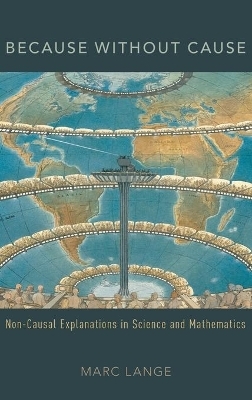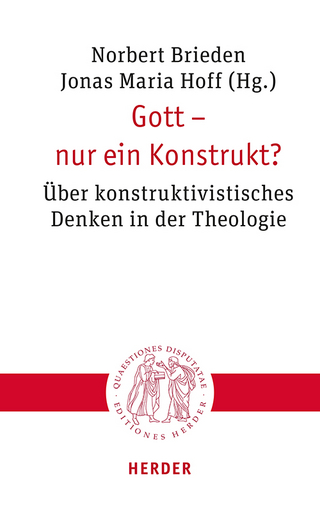
Because Without Cause
Oxford University Press Inc (Verlag)
978-0-19-026948-7 (ISBN)
Not all scientific explanations work by describing causal connections between events or the world's overall causal structure. Some mathematical proofs explain why the theorems being proved hold. In this book, Marc Lange proposes philosophical accounts of many kinds of non-causal explanations in science and mathematics. These topics have been unjustly neglected in the philosophy of science and mathematics.
One important kind of non-causal scientific explanation is termed explanation by constraint. These explanations work by providing information about what makes certain facts especially inevitable - more necessary than the ordinary laws of nature connecting causes to their effects. Facts explained in this way transcend the hurly-burly of cause and effect. Many physicists have regarded the laws of kinematics, the great conservation laws, the coordinate transformations, and the parallelogram of forces as having explanations by constraint. This book presents an original account of explanations by constraint, concentrating on a variety of examples from classical physics and special relativity.
This book also offers original accounts of several other varieties of non-causal scientific explanation. Dimensional explanations work by showing how some law of nature arises merely from the dimensional relations among the quantities involved. Really statistical explanations include explanations that appeal to regression toward the mean and other canonical manifestations of chance. Lange provides an original account of what makes certain mathematical proofs but not others explain what they prove. Mathematical explanation connects to a host of other important mathematical ideas, including coincidences in mathematics, the significance of giving multiple proofs of the same result, and natural properties in mathematics. Introducing many examples drawn from actual science and mathematics, with extended discussions of examples from Lagrange, Desargues, Thomson, Sylvester, Maxwell, Rayleigh, Einstein, and Feynman, Because Without Cause's proposals and examples should set the agenda for future work on non-causal explanation.
Marc Lange is a philosopher of science. He serves as Chair of the Philosophy Department at the University of North Carolina at Chapel Hill, where he is the Theda Perdue Distinguished Professor. His previous books include Laws and Lawmakers (OUP 2009), An Introduction to the Philosophy of Physics: Locality, Fields, Energy, and Mass (2002), and Natural Laws in Scientific Practice (OUP 2000).
0. Preface
0.1 Welcome
0.2 What this book is not about
0.3 Coming attractions
Part 1: Scientific Explanations by Constraint
1. What Makes a Scientific Explanation Distinctively Mathematical?
1.1 Distinctively mathematical explanations in science as non-causal scientific explanations
1.2 Are distinctively mathematical explanations set apart by their failure to cite causes?
1.3 Mathematical explanations do not exploit causal powers
1.4 How these distinctively mathematical explanations work
1.5 Elaborating my account of distinctively mathematical explanations
1.6 Conclusion
2. "There Sweep Great General Principles Which All The Laws Seem To Follow"
2.1 The task: to unpack the title of this chapter
2.2 Constraints versus coincidences
2.3 Hybrid explanations
2.4 Other possible kinds of constraints besides conservation laws
2.5 Constraints as modally more exalted than the force laws they constrain
2.6 My account of the difference between constraints and coincidences
2.7 Accounts that rule out explanations by constraint
3. The Lorentz Transformations and the Structure of Explanations by Constraint
3.1 Transformation laws as constraints or coincidences
3.2 The Lorentz transformations given an explanation by constraint
3.3 Principle versus constructive theories
3.4 How this non-causal explanation comes in handy
3.5 How explanations by constraint work
3.6 Supplying information about the source of a constraint's necessity
3.7 What makes a constraint "explanatorily fundamental"?
Appendix: A purely kinematical derivation of the Lorentz transformations
4. The Parallelogram of Forces and the Autonomy of Statics
4.1 A forgotten controversy in the foundations of classical physics
4.2 The dynamical explanation of the parallelogram of forces
4.3 Duchayla's statical explanation
4.4 Poisson's statical explanation
4.5 Statical explanation under some familiar accounts of natural law
4.6 My account of what is at stake
Part 2: Two Other Varieties of Non-Causal Explanation in Science
5. Really Statistical Explanations and Genetic Drift
5.1 Introduction to Part 2
5.2 RS (Really Statistical) explanations
5.3 Drift
6. Dimensional Explanations
6.1 A simple dimensional explanation
6.2 A more complicated dimensional explanation
6.3 Different features of a derivative law may receive different dimensional explanations
6.4 Dimensional homogeneity
6.5 Independence from some other quantities as part of a dimensional explanans
Part 3. Explanation in Mathematics
7. Aspects of Mathematical Explanation: Symmetry, Salience, and Simplicity
7.1 Introduction to proofs that explain why mathematical theorems holds
7.2 Zeitz's biased coin: A suggestive example of mathematical explanation
7.3 Explanation by symmetry
7.4 A theorem explained by a symmetry in the unit imaginary number
7.5 Geometric explanations that exploit symmetry
7.6 Generalizing the proposal
7.7 Conclusion
8. Mathematical Coincidences and Mathematical Explanations That Unify
8.1 What is a mathematical coincidence?
8.2 Can mathematical coincidence be understood without appealing to mathematical explanation?
8.3 A mathematical coincidence's components have no common proof
8.4 A shift of context may change a proof's explanatory power
8.5 Comparison to other proposals
8.6 Conclusion
9 Desargues' Theorem as a Case Study of Mathematical Explanation, Existence, and Natural Properties
9.1 Introduction
9.2 Three proofs - but only one explanation - of Desargues' theorem in two-dimensional Euclidean geometry
9.3 Why Desargues' theorem in two-dimensional Euclidean geometry is explained by an exit to the third dimension
9.4 Desargues' theorem in projective geometry: unification and existence in mathematics
9.5 Desargues' theorem in projective geometry: explanation and natural properties in mathematics
9.6 Explanation by subsumption under a theorem
9.7 Conclusion
Part 4: Explanations in Mathematics and Non-Causal Scientific Explanations -- Together
10 Mathematical Coincidence and Scientific Explanation
10.1 Physical coincidences that are no mathematical coincidence
10.2 Explanations from common mathematical form
10.3 Explanations from common dimensional architecture
10.4 Targeting new explananda
11 What Makes Some Reducible Physical Properties Explanatory?
11.1 Introduction
11.2 Centers of mass and reduced mass
11.3 Reducible properties on Strevens's account of scientific explanation
11.4 Dimensionless quantities as explanatorily powerful reducible properties
11.5 My proposal
11.6 Conclusion: all varieties of explanation as species of the same genus
References
Index
| Erscheinungsdatum | 20.11.2016 |
|---|---|
| Reihe/Serie | Oxford Studies in Philosophy of Science |
| Zusatzinfo | 56 |
| Verlagsort | New York |
| Sprache | englisch |
| Maße | 251 x 163 mm |
| Gewicht | 816 g |
| Themenwelt | Geisteswissenschaften ► Philosophie ► Metaphysik / Ontologie |
| Mathematik / Informatik ► Mathematik | |
| Naturwissenschaften | |
| ISBN-10 | 0-19-026948-0 / 0190269480 |
| ISBN-13 | 978-0-19-026948-7 / 9780190269487 |
| Zustand | Neuware |
| Haben Sie eine Frage zum Produkt? |
aus dem Bereich


